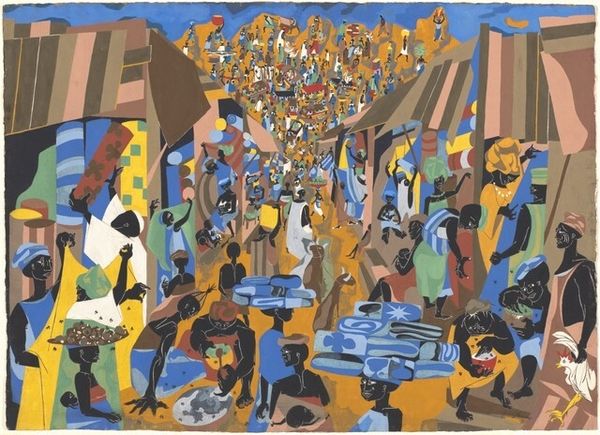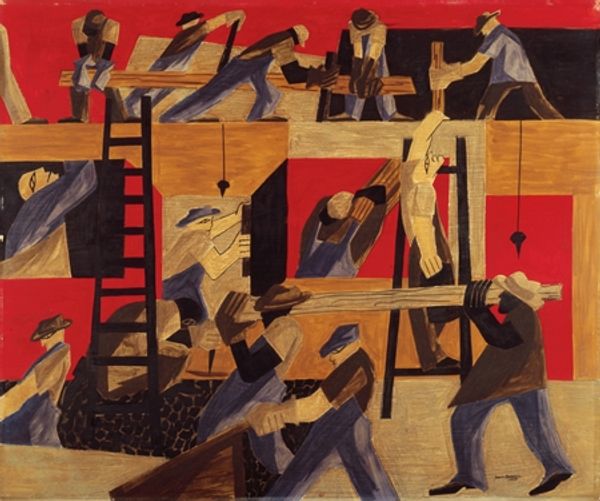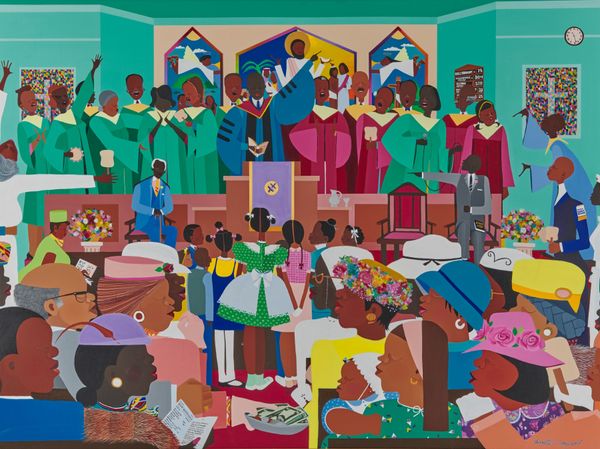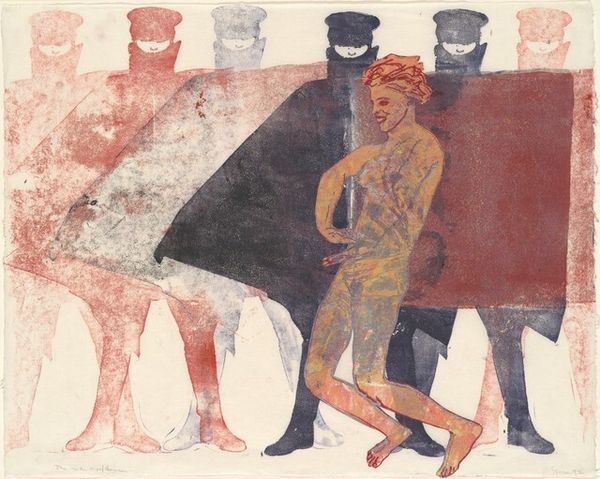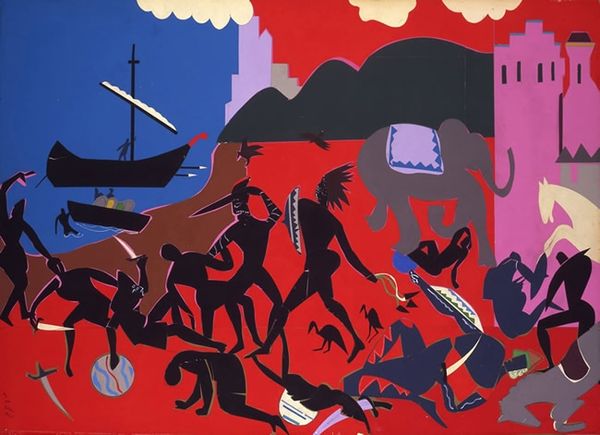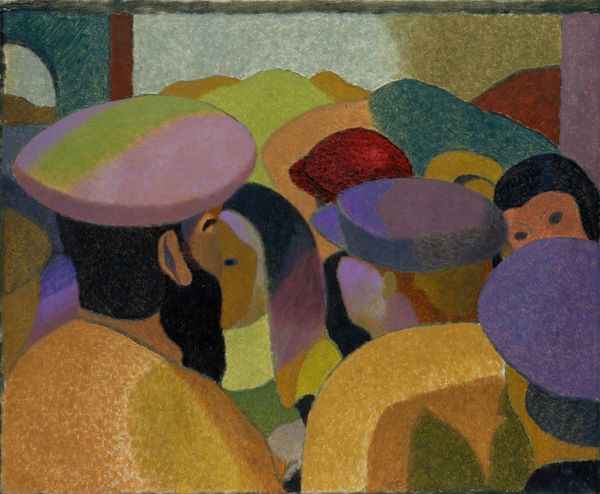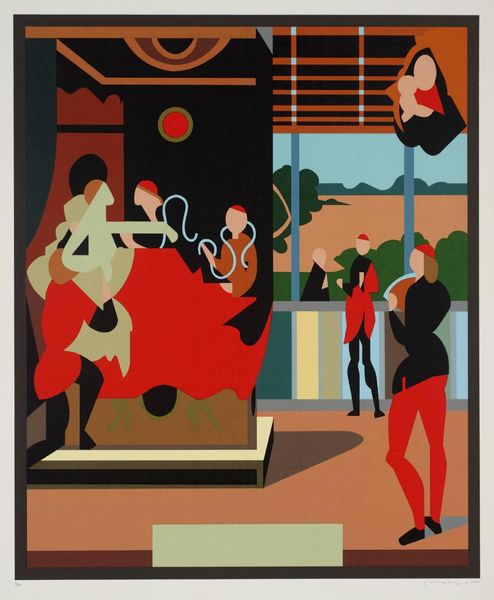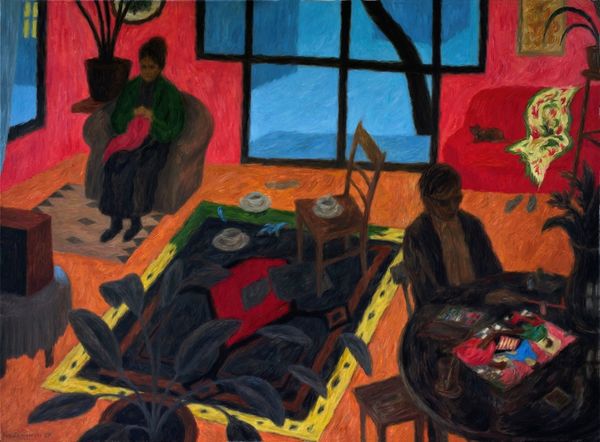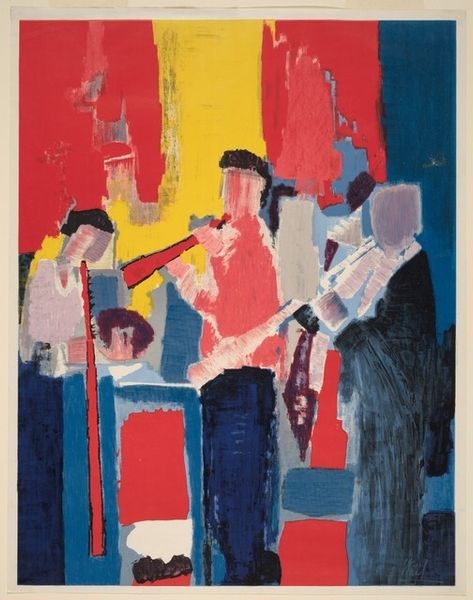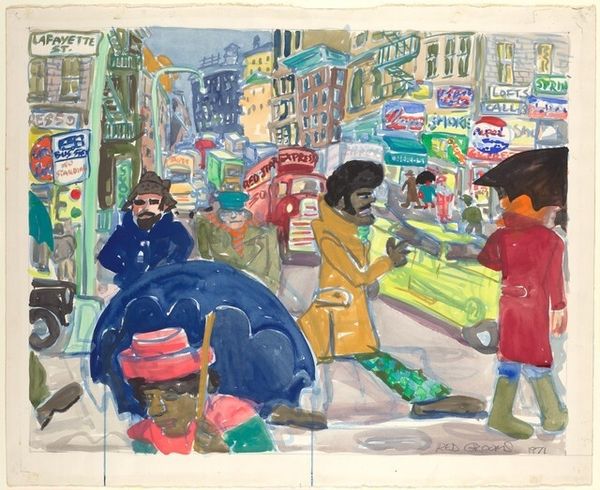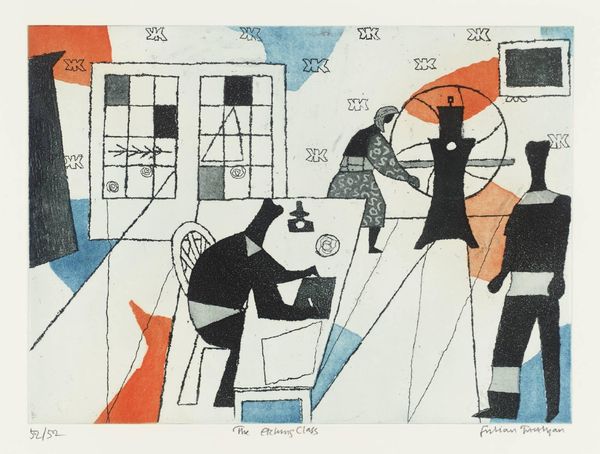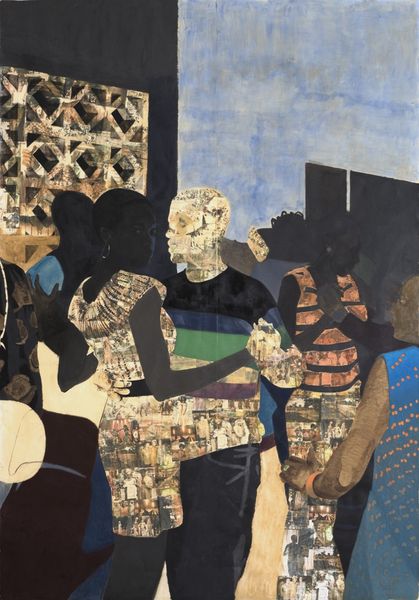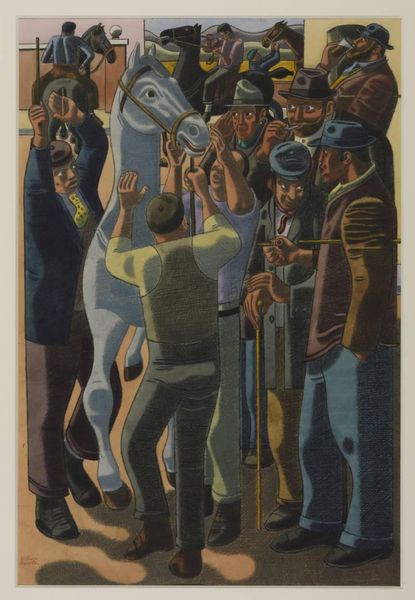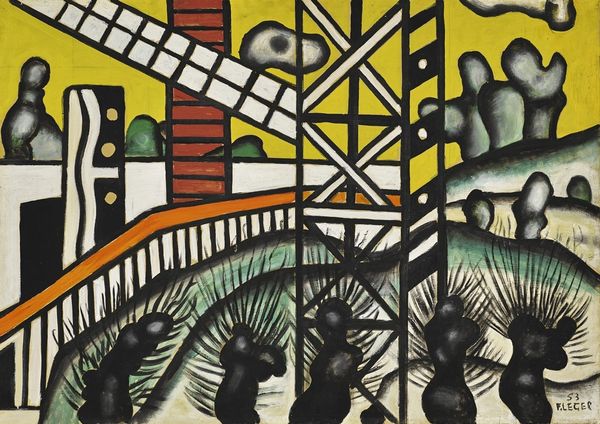
mixed-media, tempera, painting, acrylic-paint, mural
#
portrait
#
mixed-media
#
narrative-art
#
tempera
#
painting
#
pop art
#
harlem-renaissance
#
acrylic-paint
#
figuration
#
social-realism
#
mural art
#
acrylic on canvas
#
group-portraits
#
cityscape
#
history-painting
#
mural
#
modernism
Copyright: Jacob Lawrence,Fair Use
Curator: Here we have Jacob Lawrence's "The Migration of the Negro, Panel 1," created in 1941. It is a tempera painting that is part of a much larger series addressing the Great Migration. Editor: It strikes me immediately as conveying a great sense of movement and collective purpose, almost like a forceful current of bodies heading toward Chicago, New York, and St. Louis. Curator: Indeed, Lawrence renders a crowded scene behind barriers, using simplified shapes and strong, flat colors. We must remember the historical context; the Great Migration represents a massive demographic shift of African Americans leaving the rural South for opportunities in the industrialized North. How did this uprooting transform American cultural and political life? Editor: The layering of figures suggests a concentrated movement. Lawrence uses the constraints of his material to convey a certain shared experience of these travelers and their circumstances; they were not heading North as isolated people but as participants in a huge, collective movement that reshaped urban landscapes and labor markets. Curator: And the painting is remarkably efficient with its material; there's very little embellishment. Lawrence reduces the human form to geometric shapes, focusing on pattern and rhythm, what was so unique was Lawrence's employment of tempera paint, an extremely accessible medium, suggesting he understood the social impact and value this series could have to those in the communities to which it belonged. Editor: It's quite striking that, while the painting depicts crowds, you never really see individual faces. They almost blend into one another, which really makes a comment about a society of displacement as people are trying to connect and seek a better way of life. It suggests an element of uniformity to the journey, driven by a desire for freedom and agency. The lack of traditional modeling is interesting; Lawrence deliberately moves away from a Western-oriented canon. Curator: I would also add how institutional racism impacted how Black labor was considered during this period of industrial development, in tandem with production. It also challenges prevailing cultural narratives that often erase African American experiences from mainstream history. Editor: Examining the intersection of materiality and message, we can see how Lawrence crafted this series with the understanding that its reception in society held political implications, contributing significantly to collective memory and social discourse. Thank you for shedding light on Lawrence's methodology and historical intent! Curator: It’s a pleasure to reconsider these artistic and political impacts.
Comments
No comments
Be the first to comment and join the conversation on the ultimate creative platform.
